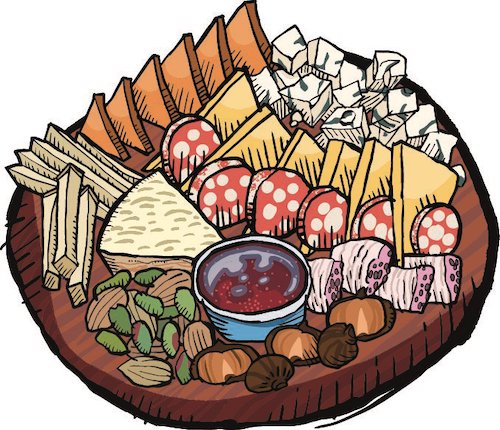1. First things first: What cheeses should you get for a cheese board?
The classic answer is to get a variety. Get a young soft cheese. An aged harder cheese. Maybe a blue. Maybe a goat or sheep’s milk option. That is still a safe and delicious way to go. But it’s not the only strategy.
I’ve had a great time eating two or three versions of the same cheese, aged for different amounts of time. For example, a young and extra-aged Comté.
An old vs. new world pairing is fun, too. Try two clothbound cheddars, like Cabot from Vermont and Montgomery’s from England. Or a classic Swiss Gruyère and a cheese inspired by it, like Pleasant Ridge Reserve from Wisconsin.
You could expand that comparison to a trio. Try three goat cheeses, one fresh, one bloomy, one well aged and firm. Or three blues. You get the idea.
Or perhaps my favorite of all: just one giant piece of cheese. Get a four-pound hunk of Parmigiano Reggiano, stab it with the old, weird knife you’ve got lurking in the drawer.
2. Then add some accompaniments.
Pick items with a lot of flavor. When you eat something flavorful, a little bit goes a long way. I like to go for variety. I’ll start with some sweet pairings, like fresh or dried fruits, preserves, and honeys. Then I’ll add a few savory pairings, like bread, crackers, nuts, olives, pickles, or cured meats like salami or prosciutto. There’s no “right” answer as to what you should include—it’s your cheese board, so the only “right” items are the ones you like best!
3. Don’t give me the cold cheese.
Serve cheeses at room temperature. Take them out of the fridge about 30 minutes before serving. I can’t place enough emphasis on this advice. A cheese at 40° and one at 65° taste completely different. The aromas expand, become more complex. More of the fat spreads on your tongue, which makes the flavor more intense. When cheese is warm you’ll eat less of it and enjoy it more. The same goes for cured meats: give salamis and hams a chance to warm up for twenty minutes and you’ll taste a world of difference.
4. Play with the plating.
All those old platters, the hand-me-downs and vintage shop finds—now is the time to use them. If they’re interesting, serve cheese on them, please. Slate, wood, porcelain, or cut glass are awesome. In a pinch you can use a big cutting board or even a cookie sheet. The same rule goes for cutlery. Bring out the strange Baroque silver, the ivory-handled one-offs, the loot that you never get to share.
As for the presentation, if you want to go all out do a quick Instagram or Google Image search for #cheeseboard. There are some crazy good Van Goghs of cheese out there, sharing their art with the interweb world. You could use those as inspiration to create your own masterpiece, or keep it simple and let folks dig right in. Either way, have fun with it!

